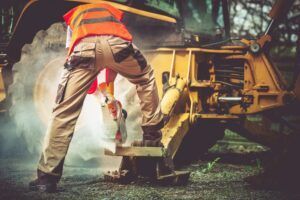
Maintenance management in construction sites is vital – everyone who’s involved with them knows that. However, for those who don’t know, almost all organizations within the construction industry use complex, heavy, and expensive equipment such as dump trucks, excavators, bulldozers, front loaders, and others. These pieces of equipment cost tens of thousands of dollars and are long-term investments, making it crucial for the management to ensure that they perform reliably, don’t malfunction, and last longer. All of these, and more, are achievable with proper maintenance of the machinery. While there are a few approaches to maintenance management, preventive maintenance is the most feasible one for construction. That being said, let’s look at some of the benefits of preventive maintenance for construction sites.
Top 5 benefits of preventive maintenance for the construction industry
Decreased equipment downtime fewer disruptions
This is one of the most prominent benefits of preventive maintenance, something that’s extremely necessary for construction firms. Preventive maintenance consists of many activities, some of which are conducting inspections, providing routine maintenance to the equipment, and replacing worn-out parts. These activities allow the maintenance team to identify minor issues that might hamper the equipment and solve them quickly and effectively. As a result, unplanned equipment downtime is reduced and disruptions are minimized – helping meet the project deadlines.
Improved equipment longevity
Reactive maintenance focuses solely on fixing the assets after they break down. For example, think of a bulldozer that receives reactive maintenance – it means that it’ll receive maintenance only after it malfunctions. Unfortunately, these issues can cause significant performance issues, more wear and tear, and even premature death, all of which reduce the asset’s longevity. In addition, these pieces of equipment cost thousands of dollars and are extremely expensive to replace – making reactive maintenance an unfeasible approach.
One of the significant benefits of preventive maintenance is that it improves the asset’s longevity, reliability, and performance. Since the construction equipment will be receiving routine maintenance, servicing, and inspections, they’ll perform consistently, be in optimal condition, and face fewer issues – helping them last longer.
Fewer emergency repairs
Emergency repairs are inevitable – any piece of construction machinery can break down at any given moment. However, with preventive maintenance, emergency repairs are reduced drastically.
Preventive maintenance means that everything is scheduled and planned out carefully, and compared to reactive maintenance, there’s a minimal chance of going overboard with the budget. Routine maintenance activities, assigned resources, inspections, spare parts, etc., are all planned, helping maintenance managers control the costs and the plan – they usually utilize CMMS software to help them implement and maintain it.
While preventive maintenance might still require emergency maintenance or repair during preventive maintenance, these will be rare instances and not the everyday occurrences are seen with reactive maintenance. As a result, maintenance, repair, and replacement costs are reduced drastically with preventive maintenance.
Reduced workplace safety incidents
Construction environments are pretty volatile and dangerous as they involve heavy machinery, unstable structures, and other hazards inherent in the job. While there are safety guidelines construction firms need to follow, ensuring preventive maintenance can also help reduce workplace safety incidents. For instance, a malfunctioning concrete mixer can cause a safety incident to harm the workers in the vicinity. If a crane malfunctions, it can cause catastrophic accidents and even cause deaths.
While safety software for construction sites is working towards preventing workplace safety incidents, preventive maintenance can also help with that. As it helps the equipment stay in optimal shape, detect potential issues, and provide regular maintenance, preventive maintenance ensures a safer environment for everyone involved, helps the site meet safety standards, and reduces workplace safety incidents.
Reduced redundant costs
Preventive maintenance is the most balanced approach for most organizations, especially construction firms.
As already mentioned, reactive maintenance focuses on fixing problems rather than preventing them beforehand, leading to higher replacement, repair, and maintenance costs. Moreover, these pieces of equipment overheat and are overexerted, leading to inefficient operations.
Predictive maintenance, while good, is still costly to set up and complex to maintain, especially with construction equipment. IoT sensors, an internet connection, and other equipment are required to set it up. So while predictive maintenance might be the future, it might not be cost-effective for construction companies.
Preventive maintenance, on the other hand, is the most balanced one for most construction firms. With scheduled maintenance, inspections, and replacing worn-out parts, the pieces of equipment run more efficiently, smoothly, and break down far less – leading to reduced maintenance, replacement, and repair costs in the long run.
Final words
While different organizations might have differing opinions on maintenance management, preventive maintenance is the most appropriate approach for construction firms, at least for now. This is because the benefits of preventive maintenance far outweigh the costs. If it’s done correctly, especially with robust systems, it can reduce costs, improve productivity, help meet deadlines, and minimize unplanned downtime.











